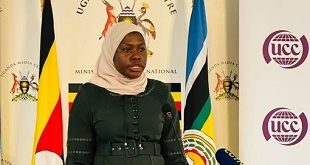
Mbale, Uganda | THE INDEPENDENT | Mbale hospital administrators are requesting for a separate ward for fistula patients arguing that mixing fistula patients in the general wards has negatively affected them psychologically.
The Fistula focal person in the hospital, Jane Frances Acam said in an interview with Uganda Radio Network – URN that the space for the fistula cases in the hospital is minimal yet the region has a high number of patients with the same cases.
She says that the region has a high number of fistula cases and yet they don’t have a specialized ward or unit to cater for these patients, adding that this makes some of the fistula patients to shun the hospital for fear of being mixed with other patients. She adds that the hospital records at least three fistula patients every month.
Acam also notes that the hospital also struggles with lack of sundries that are used in the management of fistula and that they also don’t have a specialized surgeon, noting that they have to source for one from Kitovu hospital, Soroti and Busitema Universities Specialized Hospital.
Patrick Ekomera, the Mbale hospital senior administrator says that the hospital lacks the service of a specialized ward designated to enable quality services to fistula patients before they are reintegrated in the communities.
Ekomera says that the hospital lacks adequate space to establish such facilities and that it is constrained by the limited funding which is why they have found it hard to establish a ward. He says there is need for such a facility to enable patients get quality services.
Ekomera said the hospital attracts a big number of women who require such services of fistula treatment and they need to be given privacy because they need to be prepare physically and psychologically.
Mbale hospital has registered an increase in the fistula cases. The cases mainly come from Sebei sub region and they are attributed to the female genital mutilation.
The most affected are girls between the age of 14 and 19 who get pregnant at a tender age making it hard for them to give birth.
*****
URN
 The Independent Uganda: You get the Truth we Pay the Price
The Independent Uganda: You get the Truth we Pay the Price





